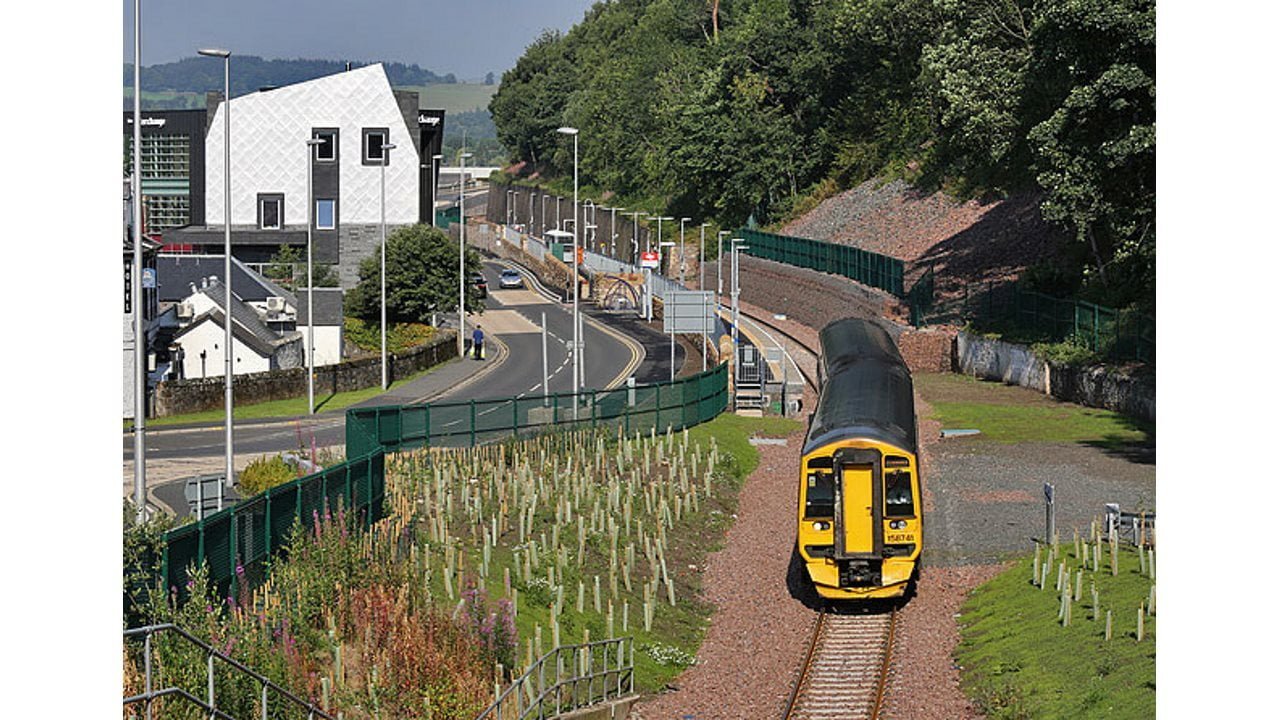The Department for Transport has confirmed that it is working alongside a variety of groups, exploring the possibility of reopening lines originally closed in the 1960s as part of the Beeching cuts.
Last year, Transport Minister Chris Grayling announced that he was encouraging both the public and private sector to submit proposals for projects to reinstate old railway lines.
Campaign groups have now been given fresh hope in the fight to bring back services that were cut over 50 years ago.
Due to confidentiality issues, the DfT are not yet able to release details of the proposed plans, however they hope to provide more information in 2019.
Dr Richard Beeching is one of the most infamous names in railway history, responsible for the closure of more than 2,300 stations, and around 6,000 miles of railway line. In the years since groups from across the UK have been fighting to bring back their community’s rail links.
One of the most successful examples of this is the Borders Railway, connecting Edinburgh and the Central Borders town of Tweedbank, with passenger numbers far exceeding original predictions – since reopening in 2015, the railway has seen more than four million passengers use the half-hourly service from Scotland’s capital; and there are now calls for the remaining line from Tweedbank to Carlisle, via the Border’s biggest town of Hawick, to be reopened.
Before the line reopened to Tweedbank, Hawick was the furthest centre of population from a rail station on the UK mainland.
What did the officials say?
A DfT spokesperson said that
“we are continuing to grow the rail network to deliver improvements for passengers, unlocking new housing and support for the economy, including exploring opportunities in restoring previously lost capacity.
“We have received a wide variety of proposals to enhance the railway from across the public and private sector, and are working with promoters to explore opportunities to re-open routes cut under Beeching.”
ScotRail Managing Director, Alex Haynes said that
“the growth of the Borders railway is actually accelerating which means we are going to have to operate longer trains on this route and I think there is more growth to come as well. The restoration of the line had already impacted communities along its route in a very positive way.”
Where Next?
News Homepage
For the Latest Railway News
RailAdvent Shop
Framed Prints, DVD’s / Blu-Ray’s and more
LocoStop – The RailAdvent Community
Come and share your railway pictures
Department for Transport
Visit their website






Responses
Furthermore … as much as I agree the Delightful Borders Railway could one day/eventually extend beyond Tweedmouth, though just as far as Hawick (as it’s permanent terminus),
”Come The UK Preservation Movement” … That Historic/Eagerly must visit stretch of the former WR at Wonderful Whitrope Summit is forever better of, the Scottish Borders’ very own Heritage Railway – which may see it’s own running line extend down the line as far as Riccarton Junction, especially through the mighty historic Whitrope Tunnel – as far as a Possible Halt (Windy Stack Woodland) towards Shankend (and back).
I Believably Think … the Borders Railway could one day re-open/resurrect a further stretch of what was once the Waverley Route to/only as far as Hawick …
Even though I’ve yet to travel and visit other places ‘in person’ one day … A lot has changed around Hawick since those days (long before I was ever born), besides … that interestingly ”eagerly must visit” town of Hawick should be a permanent terminus of the Borders Railway, as (having checked out and researched through information) the original station/alignment of track-bed have forever vanished under redevelopment.
Whilst the other stretch of the WR (whom a Preservation Association are already located/preserved a little stretch at Whitrope Summit and the thankfully still forever existing Riccarton Junction, ought to remain protected, as this stretch is a future potential Heritage Railway/the Scottish Borders Very Own Railway Heritage of course.
Re-establishment of many rail connections could also improve goods traffic also – thus taking many heavy goods lorries OFF roads and onto RAIL.
Look at the success of Channel Tunnel freight!
DfT should have a strategic plan for freight Rail – including all our admirable restored rail routes, irrespective of ownership or current use.
People always forget it was Marple, Beeching was just the guy with the axe who is the only one remembered. I my area a determined effort was made to get the old track beds build on and bridges removed thus stopping any future restoration.
Precisely what i have maintained for all these years.
The issue isn’t whether a line could be restored, any closed line could be re-opened, it’s the cost which in some cases could be largely prohibitive.
Dr Beeching isn’t really the issue, Beeching was given a job to do, the fact that that jobs terms of reference were so seriously flawed is largely irrelevant. Governments today are still able to off load the blame by holding Beeching responsible as they were at the time, where in the annals of history is there any criticism of Marples, surely the biggest crook since those of the Great Train Robbery fame
If the government were to reopen railway lines in England, Wales and Scotland. They could start reopening the missing part of the former Waverley Line that could extend from Tweedbank to Carlisle. The Haverhill Line from Cambridge to Haverhill. The missing link of the East-West Rail link from Bedford to Cambridge. New railway line to be built to Maldon, Essex from South Woodham Ferrers or from Witham to Maldon. And many more other railway lines that were closed down could soon reopen.
Essex certainly seems to have a deficit of railway lines/stations compared to other counties, particularly when you look at the population size … and all trains lead to London … can’t even get the train to Stansted Airport (which is in Essex) without going in to London and out via Herts or via rail through Suffolk and Cambridge. Not easy to get to Southend Airport by train for that matter.
This is very sensible and excellent news. A good immediate step to take would be a ban on any further development on any disused track bed until a full assessment is made of the potential benefit of reopening that particular line at any time in the future. Building of roads or structures on track beds (which has sadly happened in too many cases) should only be permitted in exceptional circumstances.
Wouldn’t it be just as appropriate to concentrate on improving some of the lines we have? I live by the Heart of Wales line: 4 trains per day in each direction with 5 hours between (if lucky – many are cancelled or turned back en route at Llanwrtyd or Llandrindod) on a timetable more appropriate for the pre-Beeching era when the collection of milk and the distribution of post and newspapers governed the railways. And as for rolling stock: we’re stuck with Class 153 or 150 DMUs as there are restrictions on any more modern stock north of Llandovery.
Methinks this is all window-dressing and when it comes to putting money where mouth is, it won’t happen. If they can’t fund Colne-Skipton or the Portishead branch now, what chance is there for (say) Carmarthen to Aberystwyth?
Beeching had no foresight as he was no railway expert but industrialist. It is ashame that this was allowed to happen look at traffic congeston. Lost a piece of rural england.
It all seems common sense to me when most of our roads traffic have increased considerably. Reopening old railway lines could take some of the load off our roads therefore making them safer to travel on.
About time that the government & DfT should consider reopening railway lines that were closed in the 1960s since Dr Richard Beeching closed most of the railways in the UK. With the remains of the railway lines now used as public bridleways, roads, footpaths, dedicated bus lanes and busways, tram tracks, reused and reopened railway lines, canals and former railway stations converted into homes or new homes being built on former railway tracks.